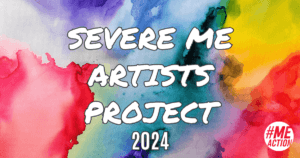Below is the text of MEAction UK’s rapid response submitted to the JNNP article that was published 10th July 2023.
In the article ‘Anomalies in the review process and interpretation of the evidence in the NICE guideline for chronic fatigue syndrome and myalgic encephalomyelitis’ published in the Journal of Neurology, Neurosurgery & Psychiatry on 10th July 2023, the authors claim NICE invented a new definition of ME. These claims are unfounded as NICE used the Institute of Medicine (IOM) criteria which is now 8 years old and was created using a more robust process than many other definitions as it drew on samples from different countries and compared the most widely used definitions of ME1.
One area where NICE felt there was a gap in the IOM criteria was the lack of an empirical process alongside other methods. Leonard Jason’s four-item empiric criteria were the only criteria that used adequate empiric methods, and this aligned very closely with the IOM criteria. As a result, NICE operationalised the IOM criteria for use in the NHS, with the four-item criteria helping to substantiate their approach.
The authors state that NICE ignored end points but have failed to fully grasp how GRADE works. To avoid bias, NICE does not measure a trials’ success based on the researchers own terms but by analysing the raw data and applying the committee’s agreed protocol. This allows NICE to measure whether a treatment had an effect or not. It is understandable that researchers are offended by the conclusion that there was very low quality evidence for their trial outcomes and no evidence that the treatments were cost effective. However, personal attachment to a theory is no substitute for dispassionate analysis of data. This is striking when looking at the assertion that research showed that the favoured treatments of CBT and GET were safe, when, in reality, safety data either was not collected or was incomplete or uninterpretable. The treatments favoured by the authors have led to many complaints from people with ME that they were harmful and led to deterioration. This was illustrated in the MEAction UK 2019 report, ME services in the UK Not Fit For Purpose2.
Rather than acknowledge the lived patient experience and seek to investigate problems, the proponents of the treatments ignored, maligned and denigrated those that were harmed.
The authors of this critique also claim that NICE didn’t aggregate data properly, but there are hundreds of pages of meta-analysis proving they were meticulous and gave detailed consideration to every trial they looked at. The real complaint here seems to be that NICE didn’t aggregate data in the way the authors of this paper wish they had. For example, the Cochrane review of exercise in ME, which many of these authors favour, pools results from multiple different interventions with very different protocols, and this has been argued to provide an evidence base for GET by extension. But that would be like pooling the evidence for CBT, DBT, ABA, psychoanalysis and counselling, and then claiming this proves ABA alone is effective. NICE sensibly grouped “like with like”, so that trials with similar protocols were grouped together, improving the accuracy and specificity of their analysis.
The criticism that NICE gave too much weight to survey evidence, and the lived experience of people with ME, was factored into the committee’s decisions alongside other evidence. ‘NICE considers all types of evidence in its evaluations. This includes evidence from published and unpublished data, data from non-UK sources, databases of ongoing clinical trials, end-to-end studies, conference proceedings, and data from registries, real-world evidence and other observational sources3.’ If the authors had taken a similar approach a great deal of harm would have been avoided and we would be further along in researching a condition that is increasing rapidly due to Covid and Long Covid.
The complaint that energy management isn’t evidenced is bizarre. Energy management isn’t offered as a therapy and it isn’t curative. It is essentially the same as the activity management of the last guideline – which many of the same authors were happy to accept when they contributed to that guideline. Energy management is essentially a continuation of those same principles of care but it is not offered or presented as a treatment. Recent guidance from the British Association of Clinicians in ME/CFS (BACME), representing the view of ME/CFS clinicians across the UK, supports this approach. The Forward ME group of charities has also endorsed this approach.
With regard to GET and whether fixed increments in activity were required NICE, had to look at the evidence from the trials. Numerous trials refer to increments that are fixed and shouldn’t be changed except with the approval of the clinician. The PACE manual for therapists explains that GET is based on the deconditioning model and discourages reductions in exercise when in a crash, ‘A central concept of GET is to MAINTAIN exercise as much as possible during a CFS/ME setback. This is to reduce the many negative consequences of rest, and to allow the body to habituate to the increase in activity. If activity and exercise is reduced at this time, the boom/bust cycle continues, and the body is not able to desensitise to the increase in activity: which is, of course, an essential component of a graded increase in exercise and activity4.’ If the treatment was delivered in a different way in practice it would indicate that the GET as researched wasn’t effective in clinical settings.
Similarly, it cannot be merely assumed that because one approach is helpful elsewhere, that it is helpful here. There is no treatment that is suitable for all diseases. Chronic primary pain isn’t ME and asthma isn’t diabetes and it should be self-evident that different illnesses need different treatments.
We are also concerned that news coverage about this paper (and previous news coverage quoting the same authors) continues to paint people with ME as unreliable witnesses to their own illness and lives. This is a long-standing form of bias against disabled people.
This is compounded by the refusal of these authors to use inclusive and patient-centred language chosen by our community, despite requests to the contrary. The attitude of the authors to people living with ME is illustrated by their refusal to accept that the illness is now called ME/CFS by NICE and that ME is preferred by patients. Using the term Chronic fatigue syndrome/myalgic encephalomyelitis (CFS/ME) throughout appears to be a calculated insult to a community that has long suffered neglect and stigmatisation by the medical hierarchy.
In conclusion, this article reads as an attack on the 2021 NICE guideline for ME/CFS by a group of researchers who have focussed on treating ME with their pet therapies. By contrast, the patient community welcomes the NICE guideline and the robust review of the evidence that NICE carried out. The guideline is a real improvement on the previous version and the removal of Graded Exercise Therapy as a recommended treatment was greeted with relief. It is now time for researchers and medical staff to stop acting as a lobby group obstructing much needed change and, instead, work with people living with ME to implement the NICE guideline throughout the NHS. Further delay and obstruction will cause more harm and increase the suffering of a very vulnerable group of people.
- https://www.ncbi.nlm.nih.gov/pmc/articles/PMC5008852/
- https://www.meaction.net/2019/10/17/me-services-in-the-uk-not-fit-for-purpose/
- https://www.nice.org.uk/about/what-we-do/:~:text=View%20the%20framework-,About%20the%20framework,reporting%20real-world%20evidence%20studies
- https://me-pedia.org/images/8/89/PACE-get-therapist-manual.pdf






4 thoughts on “MEAction UK submits a rapid response to the JNNP in support of NICE.”
This is very good. Very comprehensive. Thank you for producing this so quickly.
Thank you from Bed. And let’s not forget the huge list of Competing Interests at the end of the paper…
I loved the ease with which the flaws in the JNNP article were exposed in this response, so beautifully thought out and worded in a way that my ME damaged brain can now never aspire to do.
It is precisely because we are a very vulnerable patient group that we have been chosen by these researchers to be the victims of their ambitions.
Thank you for this extraordinarily balanced, comprehensive and articulate response on behalf of us all, thank you to infinity.
Comments are closed.